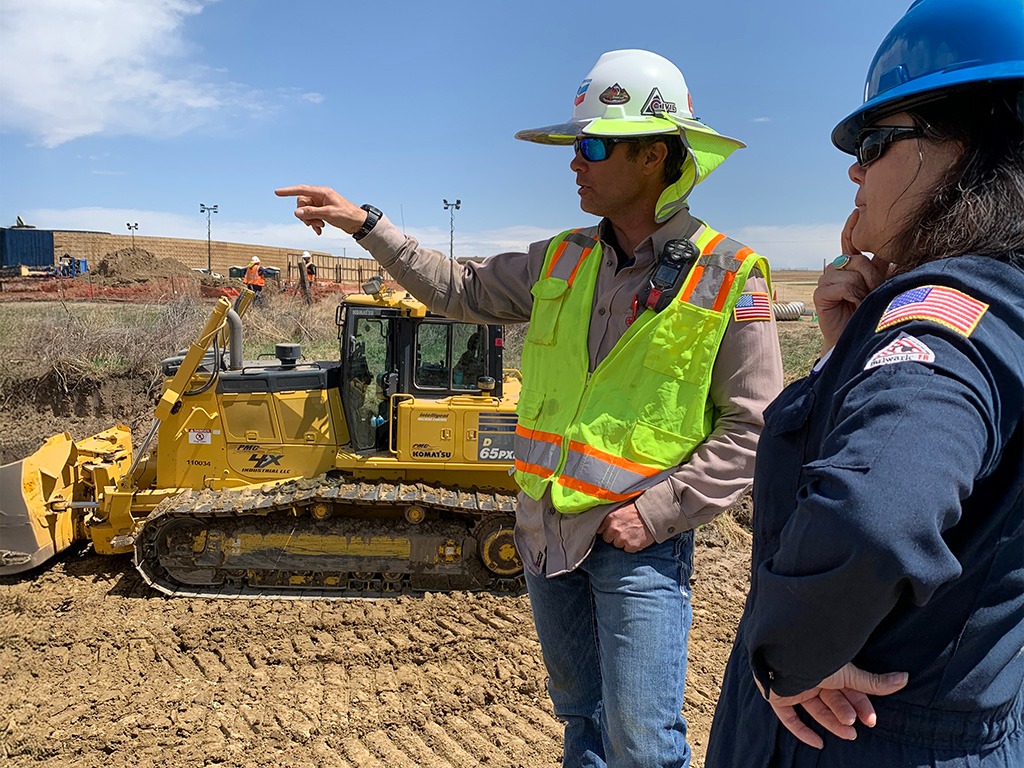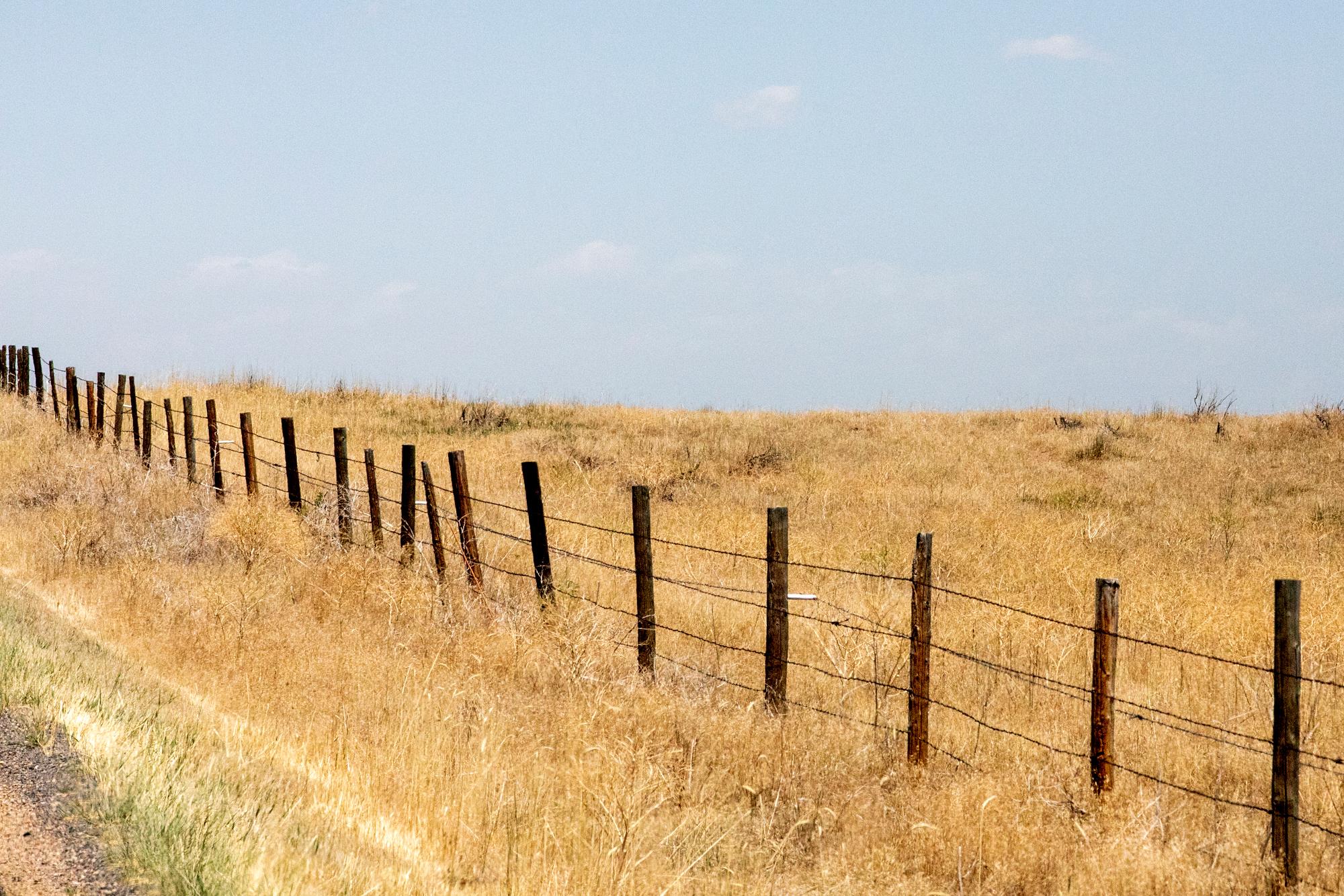
Chevron and state regulators are still determining how much crude oil, chemicals and water spewed uncontrollably for nearly four days into nearby waterways and properties after equipment failed on a Weld County well in early April.
A Chevron-operated well on the Bishop pad near Galeton took nearly five days to fully secure and resulted in a rush of chemicals onto homes, cars, fences, multiple creeks and ‘high priority habitat’ for the mule deer, according to the state’s Energy and Carbon Management Commission.
“This was unprecedented and rare and required over 300 people on-site working around the clock for remediation,” said Kristin Kemp, an ECMC public information officer.
The Weld County Office of Emergency Management, Chevron, the Galeton Fire Protection District and the U.S. Environmental Protection Agency estimated that the well discharged around 80 percent water and 20 percent oil and gas at its peak.
Gregory Dean, an oil and gas administrator for Adams County, which was not involved in the well’s permitting or clean-up process, said an incident like this is a worst-case scenario for wells in the massive Denver-Julesburg basin, which produces most of Colorado’s crude oil.
“This is probably the worst case scenario of something happening, an uncontrolled multi-day well incident,” Dean said. “We’ve had some fires, but they’ve been out within an hour. We’ve had spills that were small and they were able…to get them cleaned up completely in a matter of days and get the wells back online.”
Under state regulations, Chevron will conduct and pay for clean-up operations overseen by the state, and may face hefty fines after an investigation. The company is expected to disclose the volume of spewed fluids in the next few weeks. In an initial site investigation plan filed by Chevron, the company said it was planning to abandon over 1100 feet of lines used in its operations as a result of the spill.
Clean-up may take weeks, if not months, because Chevron will have to completely remediate areas around the well pad to standards set by state regulators.
On April 6, barriers designed to keep fluids like oil from flowing out of a drilled well failed after the ‘completions’ process. That process occurs after a well is drilled but before the well begins extracting oil.
After a preliminary investigation, Chevron said that the blowout occurred as the company was in the process of attaching an adapter to the well, which would allow it to extract oil and natural gas from the site.
“Our preliminary assessment indicates that the incident was caused by a failure of wellhead equipment at the surface and was not related to fracking or downhole operations,” Patty Errico, a Chevron spokesperson, said in an email.
“While our thorough root cause analysis is ongoing, Chevron has installed a secondary barrier downhole during new tubing installations to mitigate against reoccurrence,” she added.

Incidents like these in Colorado are extremely rare, according to regulators, and the exact cause is still being determined. State data shows that hundreds of wells dot the area near Galeton, and there are over 15,000 wells in Weld County actively producing oil and gas. According to state data, there are hundreds of active wells in Colorado in the same stage as the Bishop well – done with drilling and transitioning to producing.
On Friday, regulators reminded operators of best practices for transitioning wells to move them closer to pumping up oil and gas.
After Chevron’s equipment failed, it took nearly 400 emergency response personnel and Chevron contractors nearly four days to contain the well and ensure fluids were no longer spewing, according to state regulators. On April 11, contractors fully sealed the well.
The incident, known as a ‘blowout,’ injured one contractor, according to Chevron, temporarily closed down the Galeton Elementary School and affected around 20 homes in a half-mile voluntary ‘exclusion zone.’ The school reopened on April 22, according to the company. There are still around 200 people working on-site, according to regulators.
Chevron deployed ‘booms’ to contain oil and chemicals that flowed into Willow Creek, a nearby waterway that had a thin sheen of oil visible, according to regulators. The EPA was also on site to assist with the clean-up, while Colorado Parks and Wildlife is monitoring the waterway for evidence of fish die-offs and other wildlife impacts.
The well, known as #A18-742, is one of 16 wells on the Bishop pad, none of which are producing oil. Drilling began on December 23, 2023 and was completed prior to the incident, according to state records.
Records indicate the entire pad was last inspected in July 2024, and state regulators ordered Chevron to take minor corrective actions, like fixing stormwater control measures and clearing some minor leakage and stained soil. It’s unclear when those repairs happened.
There are no currently known impacts to drinking water supplies, and air pollution has declined after the well site was secure, according to Colorado’s Department of Public Health and Environment.
“Early available data indicated that during the incident, air pollutants did not reach levels that would cause immediate harm to human health for those nearby,” said Kristin Richmann, a communications specialist within the department.
Chevron said they are continuing to monitor air quality, take water and soil samples and tamp down dust on nearby roads as a result of increased vehicle traffic.
Funding for public media is at stake. Stand up and support what you value today.









